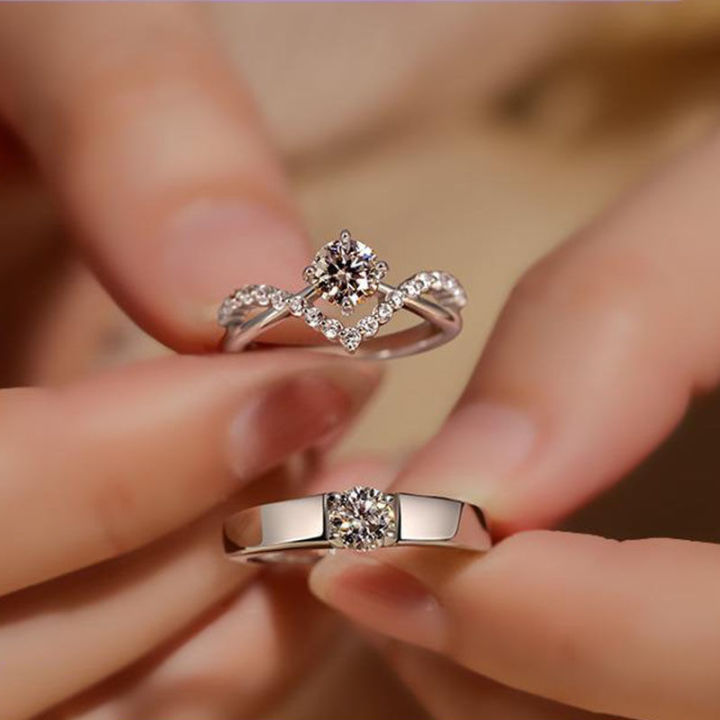When it comes to choosing the perfect gemstone for engagement rings, necklaces, or other fine jewelry, the debate between Moissanite vs Diamond is a common one. Both gems have stunning visual appeal and excellent properties, but they differ in key areas that might influence your decision.
In this article, we’ll break down the differences, pros, and cons of Moissanite and Diamonds, helping you make an informed choice when purchasing your next piece of jewelry.
H1: What is Moissanite?
Moissanite is a rare, naturally occurring mineral first discovered in 1893 by French chemist Henri Moissan. While the natural form of moissanite is exceedingly rare, it is now most commonly produced synthetically in laboratories. Moissanite is made of silicon carbide (SiC) and is prized for its brilliance and fire, often outshining diamonds due to its higher dispersion of light.
H2: Moissanite’s Physical Properties
- Brilliance: Moissanite has a higher refractive index (2.65-2.69) than diamonds (2.42), meaning it reflects more light and appears brighter.
- Hardness: On the Mohs scale of hardness, Moissanite scores a 9.25, making it incredibly durable, although not as scratch-resistant as diamonds, which rank at a perfect 10.
- Color: Moissanite typically has slight color hues, particularly under certain lighting conditions, which can range from near-colorless to slightly yellow or green. However, higher-quality Moissanite stones, like those labeled “DEF” or “Colorless,” can resemble diamonds in their clarity and appearance.
H1: What is a Diamond?
Diamonds are made of pure carbon and are formed under intense pressure and heat deep within the Earth’s mantle. They are the most sought-after gemstone for engagement rings and fine jewelry, moissanite vs diamond, largely due to their rarity, tradition, and status as a symbol of eternal love.
H2: Diamond’s Physical Properties
- Brilliance: Diamonds also possess a high refractive index, which gives them a stunning sparkle. However, diamonds are not as fiery as Moissanite due to their lower dispersion.
- Hardness: Diamonds are the hardest naturally occurring substance on Earth, ranking 10 on the Mohs scale. This makes them highly resistant to scratching and perfect for daily wear.
- Color: Diamonds come in various colors, from colorless to shades of yellow and brown. The most valuable diamonds are typically colorless or near-colorless, graded on a scale from D (colorless) to Z (light yellow).
H1: Moissanite vs Diamond: A Comparison of Key Factors
H2: Price Comparison: Moissanite vs Diamond
One of the most significant differences between Moissanite and Diamonds is their price. Moissanite is significantly more affordable than diamonds, often costing a fraction of the price per carat.
- Moissanite: Typically costs 10% to 20% of the price of an equivalent diamond.
- Diamond: Prices for diamonds can be quite expensive, especially for larger stones with high clarity and color grades.
For budget-conscious buyers who want the look of a diamond without the hefty price tag, Moissanite can be an excellent alternative.
Durability and Longevity
Both Moissanite and diamonds are durable, but diamonds are the harder and more scratch-resistant material. This means that diamonds are more likely to retain their pristine condition over time. Moissanite is still a highly durable stone, with only a slight difference in resilience when compared to diamonds.
- Moissanite: Very durable, but might be slightly more prone to scratching compared to diamonds.
- Diamond: The hardest natural material, virtually scratch-proof.
Environmental Impact
For eco-conscious consumers, lab grown diamonds, Moissanite offers an advantage. Since Moissanite is lab-created, its production typically has a lower environmental impact compared to mining diamonds. Diamond mining can have significant environmental consequences, including habitat destruction, water contamination, and the release of greenhouse gases. Lab-grown diamonds are an alternative to mined diamonds and can be an eco-friendly option, though they still carry a higher environmental footprint compared to Moissanite.
Which One Should You Choose?
Moissanite: The Ideal Choice for Budget-Conscious Buyers
If you’re looking for a brilliant and durable gemstone without breaking the bank, Moissanite may be the perfect choice for you. Its affordable price point, coupled with its sparkling appearance, makes it a great alternative to diamonds, especially for engagement rings or statement jewelry pieces.
Diamond: A Timeless Symbol of Luxury
If you’re seeking a more traditional, prestigious gemstone or a family heirloom to pass down through generations, diamonds are still the gold standard. Their rarity, history, and unmatched brilliance make them the ultimate choice for those who want a timeless and luxurious stone.
Final Thoughts on Moissanite vs Diamond
Choosing between Moissanite and Diamond depends on your personal preferences, budget, and what you value most in a gemstone. Moissanite offers incredible brilliance, affordability, and sustainability, making it an excellent choice for many. On the other hand, Diamonds offer unmatched luxury, history, and permanence, making them a timeless classic.
No matter which you choose, both stones offer beauty and elegance that will last a lifetime.




